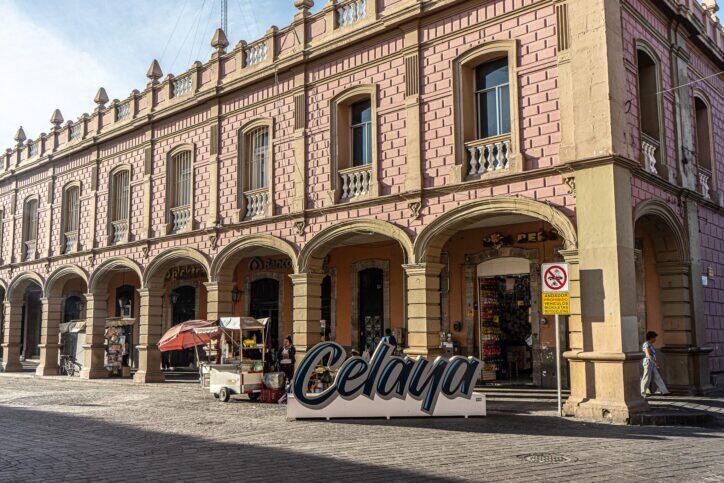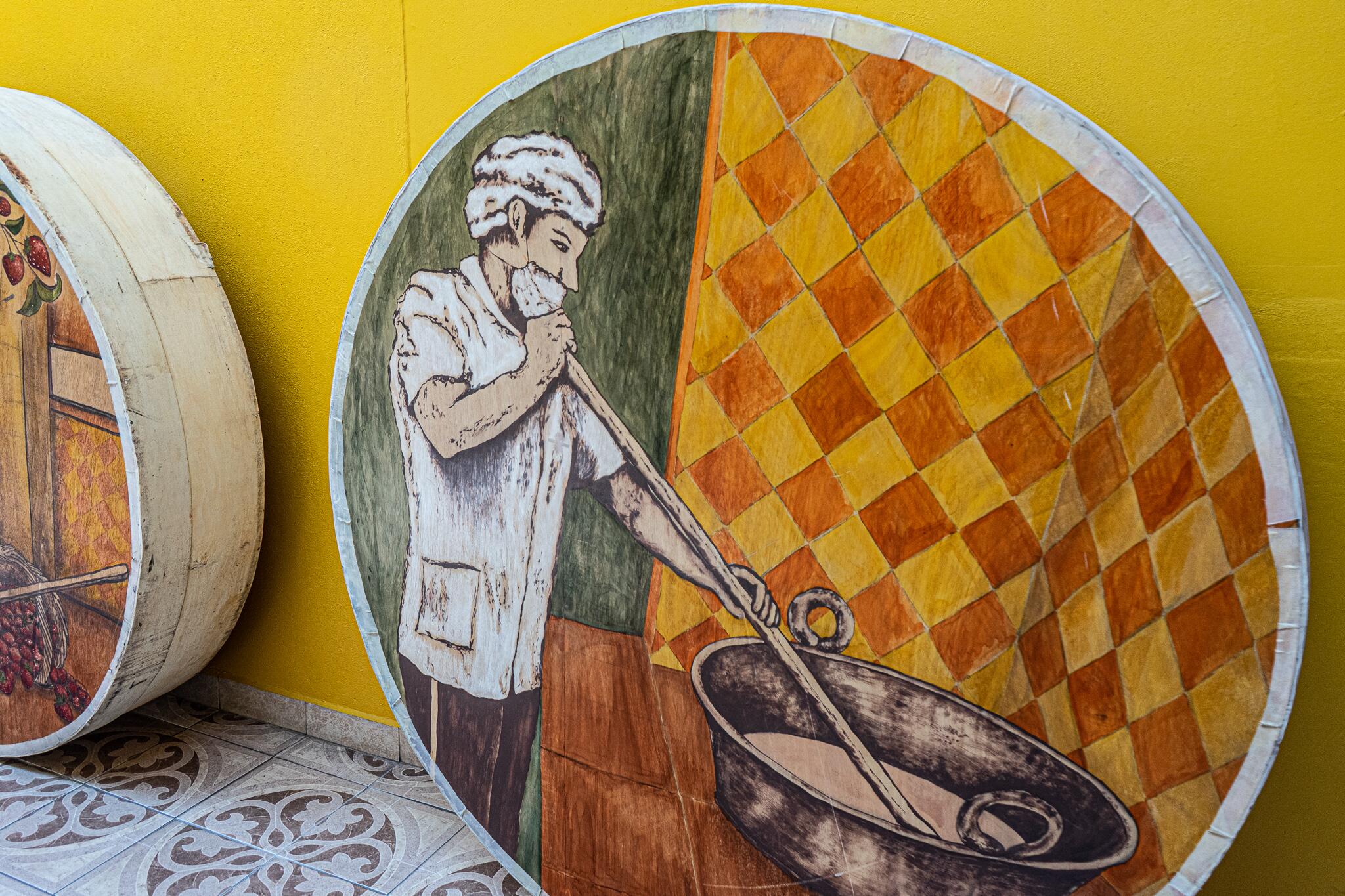In Mexico, a caramel candy tells a tale of revolution and independence.
“You haven’t tried Cajeta?” asks the manager with disbelief as curious tourists enter his historic sweet shop in downtown Celaya. “OK guys, let’s have a tasting, right now! This is the candy that gave Mexico independence!”
Located in Mexico’s Guanajuato province, a few hours drive north from Mexico City, Celaya isn’t on too many tourist trails. But in Mexico, the city is famous for two things: its prominent role in the Mexican Wars of Independence, and Cajeta, a sweet caramel candy beloved by Mexicans.
And as it turns out, Celaya’s two claims to fame are inextricably interlinked.

“Sugar, cinnamon, and goat’s milk,” exclaims Jose Emmanuel Espinosa. “You only need three things to make a good Cajeta.” If anyone knows how to make a good Cajeta, it’s Espinosa, the manager of La Tradicional de Salgado in Celaya. Dating back to 1860, the sweetshop is one of the oldest in Mexico.
Cajeta is a thick, caramelized sauce made by simmering goat’s milk for hours at a time. It’s eaten straight from the jar, used for cooking and baking, or turned into a tantalizing array of candies. “Celayans have a real sweet tooth,” says Natha Williams, a local university lecturer who enjoys showing the rare visitor to Celaya around his home city. “Sometimes we just eat Cajeta on toast.”
Cajeta, which is similar to other caramels such as dulce de leche, can trace its origins to Celaya. It was first cooked up by accident at the start of the 19th century when revolutionary armies began taking up arms and fighting the Spanish for independence.
Recommended Fodor’s Video
Mexico celebrates its independence day on September 16, a day marking the start of the Mexican Wars of Independence in 1810. In the city of Dolores, just up the road from Celaya, a local priest known to history as Father Hidalgo once gave an impassioned speech on the church steps calling for the end of bad government. That story is shrouded in nation-building myth; Father Hidalgo became a heroic, founding-father figure in Mexican history, although the exact words of the now legendary El Grito de Dolores have been lost to time.
Williams explains in more detail the part that Cajeta played in this revolutionary story, a story that’s equally shrouded in local myth and legend. “Cajeta was first made during the Independence Wars,” says Williams. “Father Hidalgo and his revolutionary armies took Celaya in the first weeks of the war, in 1810. A local woman was preparing Atole, a milky drink made with cinnamon and sugar, for the soldiers. We still drink it today in Celaya. But the Atole was accidentally burnt. Rather than throwing it away, the soldiers tried it and thought, actually, this is pretty good! That was the first Cajeta.”
The accidental creation of Cajeta happened at a time when Father Hidalgo and other revolutionary characters from the Guanajuato region, including Ignacio de Allende, were attempting to organize their rag-tag army of rebels in Celaya. Father Hidalgo was given the extraordinary rank of Captain General of America while based in Celaya, and Williams explains how the accidental candy found its name and place in history. “Hidalgo adopted the new candy for his army. They would use these huge wooden storage wheels, which were called Cajetas, fill them with caramel, and then take them to war.”
Cajeta was not only a delicious sweet treat but it was easily transportable, it didn’t spoil, and perhaps most importantly, it was packed full of sugar. Under the influence of the new Captain General of America, Celaya was soon churning out Cajeta for the rebel army. The sweet candy was literally fueling the fight for Mexican independence.
The war would last a decade, only ending in 1821 long after Father Hidalgo had been killed and passed into legend. By that point, Cajeta, with its revolutionary associations and connection to one of the country’s most heroic characters, had spread all over Mexico.
Cajeta was given the honorary distinction of being named a “Bicentennial Dessert” on the 200th anniversary of the war, celebrating both the candy’s popularity and its connections to Mexican independence. It also happened to be the 150th anniversary of La Tradicional de Salgado, and the old sweet shop in Celaya received a presidential visit to mark the occasion.

Espinosa proudly points out a plaque behind his counter. “In 2010, the President of Mexico gave us this commemoration. That day was really important for us because Cajeta was officially recognized as a national dessert.”
“They first started making Cajeta in this shop in 1860,” Espinosa continues. “That’s 160 years of production, and we are still busy every day. We started with one type of Cajeta, and now we stock over 100 types of candy.”

In Celeya’s oldest sweetshop they have seven different flavors slowly thickening in large copper vats in the cooking area. There’s the original Cajeta (the most popular Cajeta), which uses a recipe Espinosa claims to be unchanged since it was accidentally invented in Celaya during the Mexican Wars of Independence. Then there’s strawberry and vanilla, two nutty flavors, an alcohol-infused Cajeta, and Camelo, a seriously caramelized Cajeta that’s left cooking until it’s almost completely burnt.
“It takes three-and-a-half hours to make classic Cajeta,” explains Espinosa. “But for the best ‘burnt’ Cajeta, it takes eight hours. The flavor is fantastic, it just takes a long time to cook.”
Espinosa happily hands out samples of all the shop’s sweet treats, and while classic Cajeta is sold simply as a thick sauce in glass jars, the different flavors are turned into a tantalizing range of candies, sweet treats, and savory delights that demonstrate just how popular Cajeta has become in Mexico. There’s strawberry rolls, chocolate Cajeta, cheesecakes topped with thick Cajeta sauce, and even a selection of cheeses, wines, and mezcals infused with sweet Cajeta.
“We host a huge festival here in Celaya once a year,” Espinosa continues. Celaya’s Cajeta Fiesta is the ultimate event for caramel candy-lovers. Espinosa points out a huge, traditional wooden Cajeta wheel in the sweetshop. The sort that would have been made for Father Hidalgo’s rebel armies as they marched across Mexico. “We fill at least 12 of these Cajeta wheels for the fiesta,” explains Espinosa. “There are even bigger ones too…after all, this is our chance to celebrate all things Cajeta!”
Cajeta has become a sweet symbol of revolution and independence for Mexicans and a steady stream of customers leave Celaya’s oldest sweetshop with bags full of candies and caramel. A simple recipe of sugar, cinnamon, and goat’s milk, alongside a heroic, legendary origin story has given Cajeta an immovable place in Mexican history, as the candy that fueled the fight for independence.



